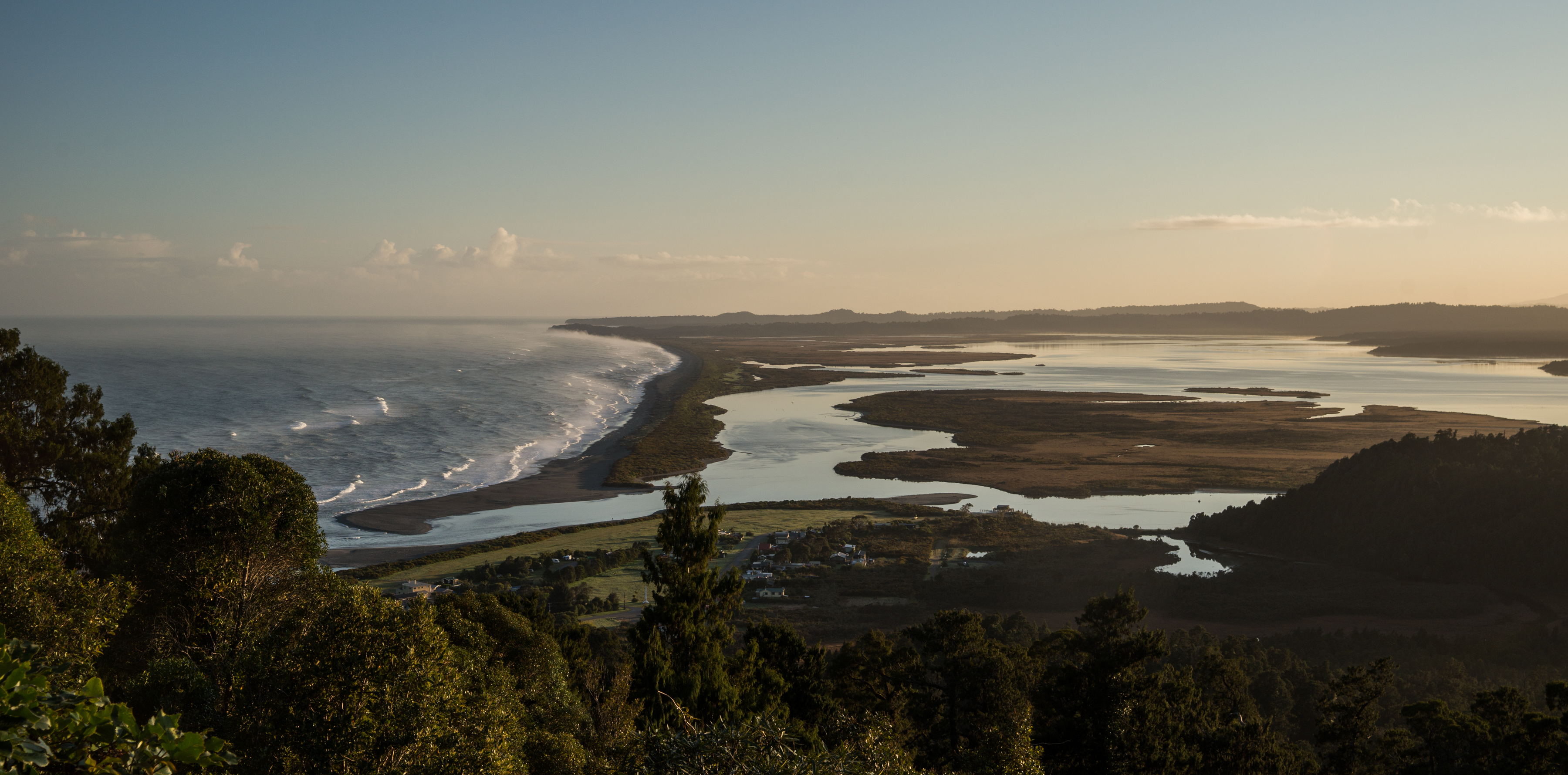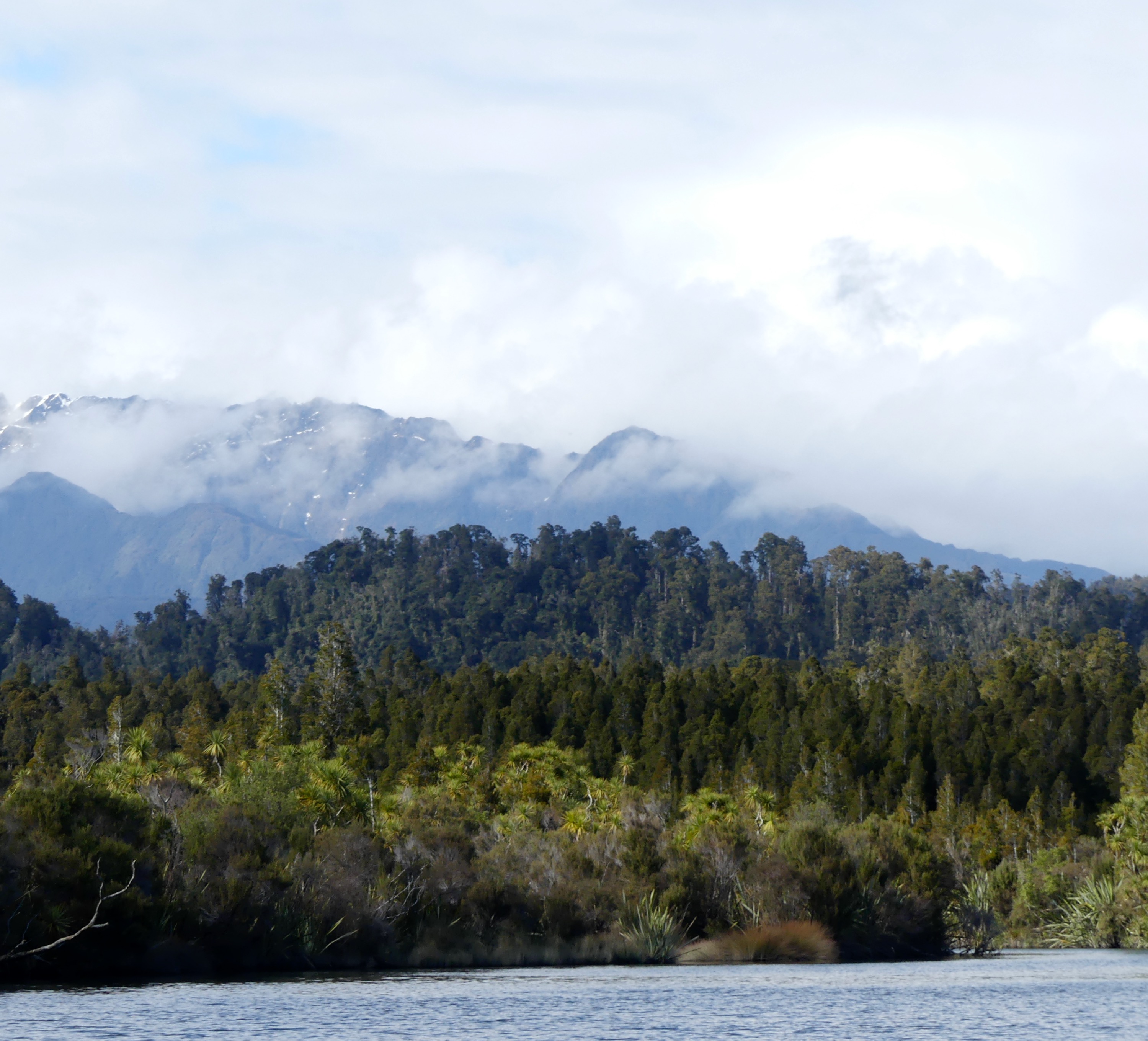ŇĆkńĀrito Lagoon on:
[Wikipedia]
[Google]
[Amazon]
ŇĆkńĀrito Lagoon is a coastal lagoon on the West Coast of New Zealand's South Island. It is located south of
 The lagoon is in area, mostly quite shallow. It is the largest
The lagoon is in area, mostly quite shallow. It is the largest

 ŇĆkńĀrito Lagoon has extensive meadows of
ŇĆkńĀrito Lagoon has extensive meadows of
Hokitika
Hokitika is a town in the West Coast region of New Zealand's South Island, south of Greymouth, and close to the mouth of the Hokitika River. It is the seat and largest town in the Westland District. The town's estimated population is as of ...
, and covers an area of about , making it the largest unmodified coastal wetland
A wetland is a distinct ecosystem that is flooded or saturated by water, either permanently (for years or decades) or seasonally (for weeks or months). Flooding results in oxygen-free (anoxic) processes prevailing, especially in the soils. The p ...
in New Zealand. It preserves a sequence of vegetation types from mature rimu
''Dacrydium cupressinum'', commonly known as rimu, is a large evergreen coniferous tree endemic to the forests of New Zealand. It is a member of the southern conifer group, the podocarps.
The MńĀori name ''rimu'' comes from the Polynesian ...
forest through mńĀnuka scrub to brackish water that has been lost in much of the rest of the West Coast. ŇĆkńĀrito Lagoon is the main feeding ground for New Zealand's only breeding population of rare white heron. The settlement of ŇĆkńĀrito
ŇĆkńĀrito is a small coastal settlement on the West Coast of New Zealand's South Island, southwest of Hokitika, and from . It is built at the southern end of the ŇĆkńĀrito Lagoon at the mouth of the ŇĆkńĀrito River. The settlement of The Fo ...
is at the southern end of the lagoon.
Name
The lagoon's name is from the MńĀori , place of, and , the young shoots of the bulrush orraupŇć
''Typha orientalis'', commonly known as bulrush, cumbungi, or raupŇć, is a perennial herbaceous plant in the genus ''Typha''. It is native to Australia, New Zealand, Malaysia, Indonesia, Japan, Korea, Mongolia, Myanmar, Philippines, China and the ...
(''Typha orientalis''), a valued food source. Another account has ŇĆkńĀrito taking its name from a rangatira
In MńĀori culture, () are tribal chiefs, the hereditary MńĀori leaders of a hapŇę. Ideally, rangatira were people of great practical wisdom who held authority () on behalf of the tribe and maintained boundaries between a tribe's land and that ...
named KńĀrito, whose daughters Mapourika and Wahapako gave their names to nearby Lake Mapourika
Lake Mapourika is located on the West Coast of New Zealand's South Island. It lies north of Franz Josef Glacier, and the out-flowing ŇĆkńĀrito River drains it into the ŇĆkńĀrito Lagoon. It is the largest of the West Coast lakes, a glacier form ...
and Lake Wahapo. The lagoon's official name has been spelled with macrons over the vowels since 2010, although it is still commonly seen written as "Okarito".
Geography
 The lagoon is in area, mostly quite shallow. It is the largest
The lagoon is in area, mostly quite shallow. It is the largest sandbar
In oceanography, geomorphology, and geoscience, a shoal is a natural submerged ridge, bank, or bar that consists of, or is covered by, sand or other unconsolidated material and rises from the bed of a body of water to near the surface. ...
-built estuarine wetland in the West Coast region
The West Coast ( mi, Te Tai Poutini, lit=The Coast of Poutini, the Taniwha) is a region of New Zealand on the west coast of the South Island that is administered by the West Coast Regional Council, and is known co-officially as Te Tai Poutini ...
‚Äď and the largest such unmodified wetland in all New Zealand ‚Äď and is roughly in the middle of a series of wetlands that extends for 40 km, between the Wanganui River in the north and the Waiho River in the south. Around the lagoon is a low moraine ridge left by a glacier 18,000 years ago as it retreated up what is now the Whataroa River.
Several small waterways drain into the lagoon, and it is the outflow of Lake Mapourika
Lake Mapourika is located on the West Coast of New Zealand's South Island. It lies north of Franz Josef Glacier, and the out-flowing ŇĆkńĀrito River drains it into the ŇĆkńĀrito Lagoon. It is the largest of the West Coast lakes, a glacier form ...
and Lake Wahapo via the ŇĆkńĀrito River. At the southern end of the lagoon is the small settlement of ŇĆkńĀrito
ŇĆkńĀrito is a small coastal settlement on the West Coast of New Zealand's South Island, southwest of Hokitika, and from . It is built at the southern end of the ŇĆkńĀrito Lagoon at the mouth of the ŇĆkńĀrito River. The settlement of The Fo ...
. The lagoon is tidal
Tidal is the adjectival form of tide.
Tidal may also refer to:
* ''Tidal'' (album), a 1996 album by Fiona Apple
* Tidal (king), a king involved in the Battle of the Vale of Siddim
* TidalCycles, a live coding environment for music
* Tidal (servic ...
, with large stretches of mudflat being exposed at low tide, when reliable passage for canoes is only possible along a main channel. The channel forks into several streams and creeks that can be used to enter tall coastal kahikatea
''Dacrycarpus dacrydioides'', commonly known as kahikatea (from MńĀori) and white pine, is a coniferous tree endemic to New Zealand. A podocarp, it is New Zealand's tallest tree, gaining heights of 60 m and a life span of 600 years. It was fi ...
and rimu
''Dacrydium cupressinum'', commonly known as rimu, is a large evergreen coniferous tree endemic to the forests of New Zealand. It is a member of the southern conifer group, the podocarps.
The MńĀori name ''rimu'' comes from the Polynesian ...
rainforest. Most of the lagoon is trackless and muddy and only accessible by boat.
The lagoon is a dynamic system, driven by seismic activity
An earthquake (also known as a quake, tremor or temblor) is the shaking of the surface of the Earth resulting from a sudden release of energy in the Earth's lithosphere that creates seismic waves. Earthquakes can range in intensity, fr ...
along the main Alpine Fault
The Alpine Fault is a geological fault that runs almost the entire length of New Zealand's South Island (c. 480 km) and forms the boundary between the Pacific Plate and the Indo-Australian Plate. The Southern Alps have been uplifted on the f ...
. In an earthquake, the estuary
An estuary is a partially enclosed coastal body of brackish water with one or more rivers or streams flowing into it, and with a free connection to the open sea. Estuaries form a transition zone between river environments and maritime environm ...
floor settles and deepens, but sediment from landslides is also washed down from the mountains, forming a spit which partly blocks the lagoon off from the sea and raises the shoreline. Tides cannot penetrate as far, and a freshwater ecosystem
Freshwater ecosystems are a subset of Earth's aquatic ecosystems. They include lakes, ponds, rivers, streams, springs, bogs, and wetlands. They can be contrasted with marine ecosystems, which have a larger salt content. Freshwater habitats ...
forms, dominated by raupŇć
''Typha orientalis'', commonly known as bulrush, cumbungi, or raupŇć, is a perennial herbaceous plant in the genus ''Typha''. It is native to Australia, New Zealand, Malaysia, Indonesia, Japan, Korea, Mongolia, Myanmar, Philippines, China and the ...
around the water's edge. Sediment is deposited at the river's mouth as a delta. Over time, the arrival of sediment slows, the spit is breached and washed away, the water level lowers, and tides come further inland forming a brackish water
Brackish water, sometimes termed brack water, is water occurring in a natural environment that has more salinity than freshwater, but not as much as seawater. It may result from mixing seawater (salt water) and fresh water together, as in estuari ...
ecosystem. During this stage ŇĆkńĀrito's rimu
''Dacrydium cupressinum'', commonly known as rimu, is a large evergreen coniferous tree endemic to the forests of New Zealand. It is a member of the southern conifer group, the podocarps.
The MńĀori name ''rimu'' comes from the Polynesian ...
forest is able to encroach around the edges of the now-lower lagoon, a pattern we can observe today.
Flora

 ŇĆkńĀrito Lagoon has extensive meadows of
ŇĆkńĀrito Lagoon has extensive meadows of eelgrass Eelgrass is a common name for several plants and may refer to:
* ''Zostera'', marine eelgrass
* ''Vallisneria'', freshwater eelgrass
{{Short pages monitor